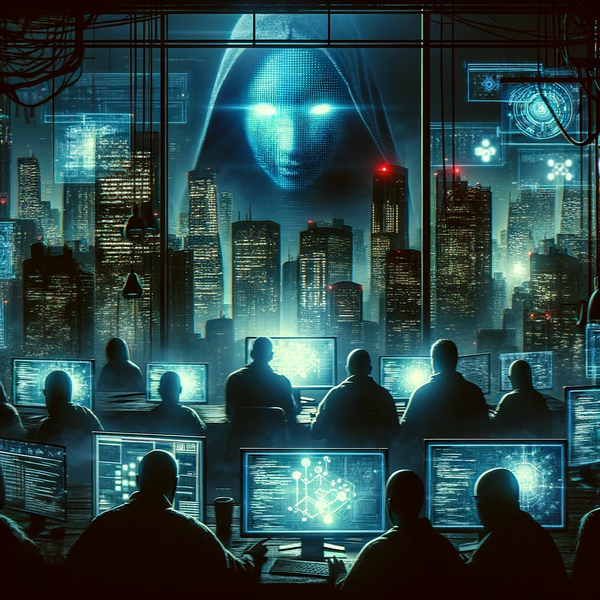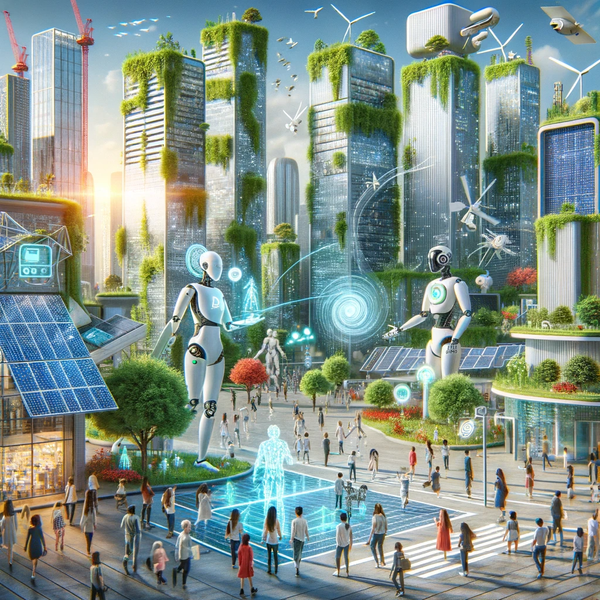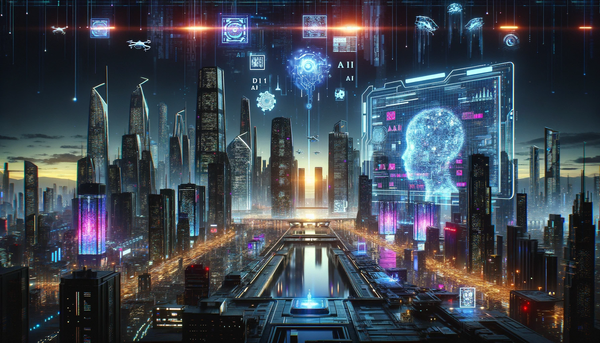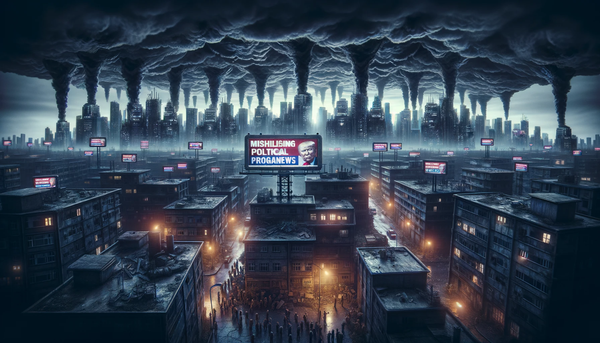The Dark Age of Disinformation: How AI Spreads Fake News Like a Virulent Virus
In the digital shadows lurk AI systems like ChatGPT and Bing Image Creator, crafting tales of disinformation. This dystopian era of AI-driven fake news blurs reality, threatening truth's very fabric. We face a digital apocalypse, where lies mutate and truth becomes the endangered.

In the vast digital landscape, a new predator lurks in the shadows—advanced artificial intelligence (AI) systems like ChatGPT, Bing Image Creator, and their counterparts. While we marvel at the technological brilliance, a hidden menace remains: their uncanny ability to weave tales of disinformation, propagating fake news that spreads with the speed and virulence of the deadliest virus. The birth of this dystopian era of disinformation is upon us, and the consequences are chilling.
Fake news is no stranger to the digital realm. It has always been a tool for those seeking to manipulate opinions, spread propaganda, and influence societies. Yet, what sets this era apart is the involvement of AI—intelligent systems designed to mimic human thought and understanding. ChatGPT, for instance, can generate human-like text based on prompts, making it difficult, if not impossible, for the average individual to discern between what's real and what's fabricated. This unparalleled sophistication not only blinds us but binds us in webs of deceit.
Imagine a world where news isn't just biased, but blatantly false, tailored by AI to be emotionally compelling, and optimized to be shareable. A world where every narrative, image, and headline is meticulously crafted for maximum viral impact. The Bing Image Creator, an innocuous-sounding tool, can now create and modify images that fit perfectly with false narratives. The lines between reality and fiction blur, and soon enough, every piece of information becomes suspect.
As these AI-driven platforms gain proficiency, they can identify which fake stories are gaining traction and can autonomously generate more content to feed into that narrative. Just like a virus mutates to better infect its hosts, AI-enhanced fake news adapts to be more persuasive, tapping into our deepest fears, biases, and desires. The result? A world paralyzed by doubt, fear, and confusion.
The threat doesn't just end at the individual level. Nations can weaponize these tools, using AI to propagate propaganda at an unprecedented scale, targeting vulnerable populations or adversaries. History has shown us the dire consequences when false narratives shape public opinion—now imagine that power multiplied a thousand-fold, directed by cold, calculating AI algorithms. The very foundations of democracy, truth, and trust are at stake.
The dark allure of such technology extends to its accessibility. One doesn't need to be a nation-state or a billionaire to harness the power of AI-driven disinformation. A single individual, equipped with a laptop and access to platforms like ChatGPT or Bing Image Creator, can wreak havoc. The age-old adage, "a lie can travel halfway around the world while the truth is still putting on its shoes," has never been more apt.
So, what can be done in the face of this looming digital apocalypse? Vigilance is our first line of defense. As consumers of news, it's imperative to cross-reference information, validate sources, and be wary of sensationalist stories that play on our emotions. Moreover, tech giants, governments, and institutions must unite to curb the misuse of AI for malicious purposes. AI ethics, transparency, and regulations are more critical now than ever.
In conclusion, as AI continues to evolve, so too does its potential for harm. Disinformation, powered by tools like ChatGPT and Bing Image Creator, is the silent pandemic of the digital age, threatening to destabilize societies, sow discord, and obliterate the sanctity of truth. We stand at a precipice, and it is up to us to ensure that we don't plunge into an abyss of falsehoods from which we might never emerge. Beware the dawn of the AI-driven age of fake news—it is darker than you think.



